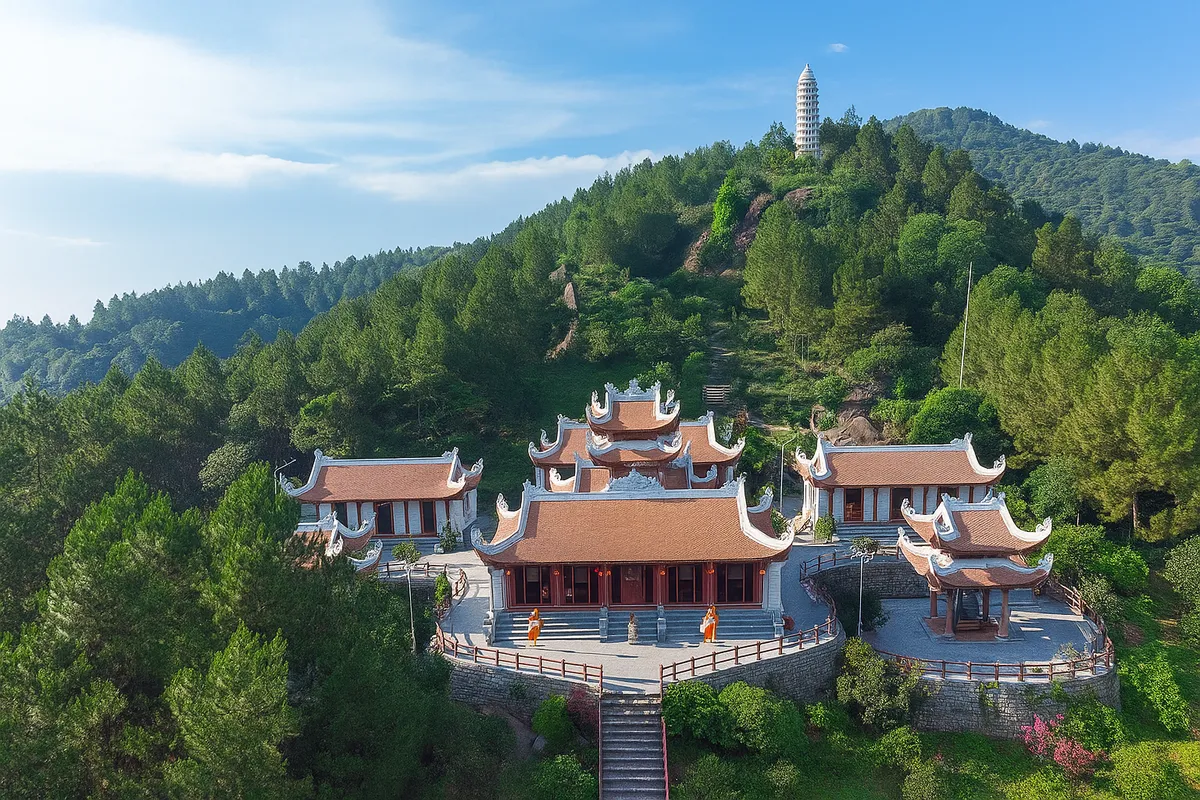2000-year-old terracotta statue's head broken by tourist's foolish jump
- Monday, Jun 02, 2025, 10:54 (GMT+7)
2000-year-old terracotta statue's head broken by tourist's foolish jump
On May 30, 2025, at the Museum of the Terracotta Warriors in Xi’an, China, a male tourist in his thirties bypassed protective barriers and entered Pit No. 3, toppling two terracotta statues over 2,000 years old. Surveillance footage captured the entire incident, which unfolded abruptly and without apparent provocation. One of the statues was severely damaged, with its head and torso detached. The incident quickly drew widespread media attention, raising concerns about the safety of cultural heritage sites amid rising global tourism.
The Terracotta Army, one of the most significant archaeological discoveries of the twentieth century, has been recognized as a UNESCO World Heritage Site since 1987. Since its unearthing in 1974, the site has attracted millions of visitors annually, all eager to witness over 8,000 life-sized clay figures of soldiers, horses, musicians, and chariots arranged in military formation. These figures reflect not only the military prowess of the Qin Dynasty but also the craftsmanship and organizational sophistication of ancient China.
Despite modern security systems and professional staff, the incident exposed a critical gap in safeguarding such valuable cultural assets. The individual involved showed no signs of intoxication or external agitation yet managed to cause irreparable harm. This raises serious questions about the effectiveness of existing visitor management protocols and reveals a troubling decline in awareness and respect for heritage preservation among certain segments of the tourist population.
This was not an isolated case. In 2017, a tourist in the United States broke and stole a finger from a terracotta statue displayed at a Philadelphia exhibition. That incident triggered a prolonged legal and diplomatic dispute between the museum and Chinese authorities. These recurring acts of vandalism highlight a broader issue beyond individual misconduct. They point to deficiencies in public education, gaps in supervision, and a growing culture of superficial engagement with history and heritage.
According to data from the World Travel and Tourism Council, inbound tourism to China surged by more than 30 percent in 2024 compared to the previous year. Young travelers represent a significant portion of this growth, with a marked preference for immersive cultural experiences. However, user behavior on platforms like TripAdvisor, Ctrip, and Mafengwo suggests that many visitors to Xi’an are primarily motivated by photo opportunities rather than a genuine interest in historical understanding. Tourism is increasingly driven by visuals and social media validation, shifting focus away from meaningful interaction with cultural sites.
Analysts from the China Tourism Research Institute have noted that traditional heritage communication methods such as signs, loudspeakers, and static warnings have limited impact on modern audiences. Tourists today expect interactive content, immersive storytelling, and digital engagement. In the absence of innovative approaches, even the most iconic sites remain vulnerable to impulsive or careless behavior. Furthermore, many heritage sites lack real-time response protocols, leaving staff ill-equipped to handle unexpected disruptions.
Some countries have taken proactive steps by integrating advanced technologies to safeguard their historical sites. In Japan, motion sensors and AI-assisted surveillance systems are used to detect suspicious behavior in national museums. In Italy, the Colosseum has implemented fixed visitor routes and remote monitoring to minimize contact with fragile artifacts. While these systems require substantial investment, they have proven effective in preserving site integrity without diminishing the visitor experience.
From a destination management perspective, the Xi’an incident demonstrates the need for a comprehensive heritage protection strategy that extends beyond administrative controls. Punishment and restriction alone are insufficient. Instead, there must be a deliberate effort to reshape visitor behavior through education, guided experiences, and a sense of shared responsibility. Countries such as South Korea and Greece have started piloting heritage tours that combine digital interactivity with cultural storytelling, yielding positive changes in visitor conduct.
For countries like Vietnam, which possess a wealth of valuable historical sites such as the Imperial Citadel of Thang Long, the ancient capital of Hue, the My Son Sanctuary, and the Ho Chi Minh Mausoleum, the lessons from China are especially relevant. Incidents of tourists climbing on statues, defacing walls, or live-streaming in restricted areas have already been documented in various Vietnamese locations. Unfortunately, enforcement remains inconsistent, often reactive rather than preventive, and the lack of visible deterrents further reduces the seriousness with which rules are perceived.
The path forward lies not in stricter policing but in cultivating a tourism culture grounded in respect and understanding. Educational content must be embedded at every stage of the tourist journey from digital trip planning to on-site interactions. Tour guides should be trained to serve as cultural ambassadors, not merely service providers. Local communities must be empowered as custodians of their heritage, participating in the preservation process as active stakeholders rather than passive observers.
Modern travelers need more than logistical directions. They need ethical orientation. Mainstream media, social platforms, and travel agencies play a vital role in reinforcing responsible tourism. Campaigns with consistent, creative messaging such as Touch With Care or Travel Without Harm can shape long-term behavioral norms. However, such messages must go beyond slogans and connect with travelers on a meaningful level.
Each incident at a heritage site is a reminder that progress requires reflection. Nobody wants to see another statue decapitated, a mural defaced, or an ancient site degraded. But if each misstep prompts improvement, then tourism can evolve into a more sustainable force. Cultural heritage is not a backdrop for personal gratification. It is a living testament to human civilization. Every scratch on a terracotta soldier is not just physical damage. It is a crack in our collective responsibility to honor the past and protect it for those yet to come.

 CHECKIN.VN
CHECKIN.VN








Share on